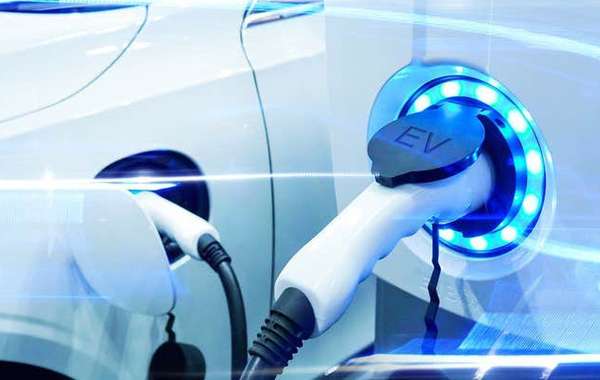To build a cleaner and more prosperous economy that creates good jobs while working to prevent runaway climate change, the Government of Canada is taking action to cut emissions from all sectors of the economy – including the transportation sector which accounts for a quarter of our greenhouse gas emissions.
All vehicles sold in Canada to be zero emissions by 2035
The Government is setting mandatory targets that all new light-duty cars and passenger trucks sold must zero-emission by 2035. This moves up the previous target date for zero emission cars which was previously 2040. While ultimately the real answer to sustainable cities is densification, better home efficiency and zero emission transit that is convenient and cost effective enough that personal vehicle ownership drops dramatically, this is still a step in the right direct in reducing emmissions and improving air quality around our cities - which is doubly important when we get heatwaves like over the last week or so.
To ensure we can reach this goal, and to provide certainty about the pathway to get there, the Canadian Government will introduce a combination of investments and regulations to help Canadians - and the transportation sector - achieve the 100 percent zero-emission vehicle sales by 2035. They will also continue to work on transitional interim targets for 2025 and 2030 to help achieve these fairly lofty goals. This announcement is coupled with existing measures to support the adoption of zero-emission vehicles, including:
- Incentives that help with the upfront costs of zero-emission vehicles;
- Investments in zero-emission charging infrastructure.
- Partnerships with mobile manufacturers to help re-tool production facilities to produce zero-emission vehicles at home in Canada.
The government has set the country on a clear path towards achieving Canada’s new 100 percent zero-emission vehicle sales goal, and a prosperous net-zero emissions economy by 2050.
The Canadian Government also remains committed to aligning with the ambitious greenhouse gas emission regulations the United States has imposed on new light-duty vehicle sales. Supporting a cross-border unified North American automotive sector transition towards zero-emission vehicles contributes to Canada’s climate change goals. It also helps Canadian and American workers benefit economically from this global shift.

What Canadian lawmakers are saying about zero emission vehicle targets:
“Only bold climate policies lead to bold results. Through measures aimed at accelerating the transition to 100 percent zero-emission vehicles sales, we will continue building a cleaner and more resilient economy, while also creating good jobs and opportunities for all Canadians. We will also continue to support the automotive sector, including through our investment of $8 billion to accelerate the industrial transition thanks to the Net Zero Accelerator.” - The Honourable Omar Alghabra, Minister of Transport
“Cutting our transportation emissions is one of the most readily achievable and economically beneficial paths Canada can take on the road to net-zero emissions by 2050. That’s why we are committed to aligning Canada’s zero-emission vehicles sales targets with those of the most ambitious North American jurisdictions. We will work with the United States to harmonize performance-based greenhouse gas regulations and greenhouse gas emission standards. We’re investing in consumer rebates, charging stations, business tax breaks and industry transition costs to make the shift to zero-emission vehicles as seamless as possible for drivers, workers and entrepreneurs.” -The Honourable Jonathan Wilkinson, Minister of Environment and Climate Change
“Today, we take another important step on the road to net zero by accelerating our zero-emission vehicle targets to 2035. Achieving this target will require all Canadians, and businesses big and small, to embrace the change and go electric. That is why we will continue to invest in measures that put Canadians in the driver’s seat to a net zero future.” - The Honourable Seamus O’Regan Jr., Minister of Natural Resources Canada
“Transportation accounts for one-quarter of Canada’s emissions. The Advisory Council on Climate Action, which I co-chaired, made the uptake of zero emission vehicles across Canada a key element of its recommendations in 2019. By increasing our ambitions on zero-emission vehicles, and by taking the measures needed to achieve them, we’re joining an increasing number of other jurisdictions, including Quebec, which have set 100 percent zero-emission vehicle sales targets. This important additional step today will help meet our goal of net zero emissions by 2050.” - The Honourable Steven Guilbeault, Minister of Canadian Heritage
“This initiative is another great example on the way in which the Government of Canada leads by example when it comes to building a climate-resilient economy. Public Services and Procurement Canada is proud to advance the procurement and installation of Electric Vehicle Charging Stations infrastructure at federal buildings and we will continue to support the conversion of our government’s fleets to zero-emission vehicles.” - The Honourable Anita Anand, Minister of Public Services and Procurement
Other intiatives to support a transition from gas to electric vehicles :
Canada's new zero-emission vehicle sales target will support their 2030 climate change mitigation targets, which are to achieve 40 percent to 45 percent reductions below 2005 levels. Since light-duty vehicles remain in service for about 15 years, the requirement that 100 percent of vehicles be zero-emission by 2035 will also help put Canada on a clear path to achieving its goal of net zero emissions by the year 2050.
Today’s announcement brings the Canadian Government’s level of ambition on zero-emission vehicles in sync with other leading jurisdictions, such as the UK and California. Within Canada, the provinces of Quebec and British Columbia have also set their own 100 percent zero-emission vehicle sales requirements.
The Government of Canada will conduct consultations with Indigenous communities and other levels of government and stakeholders to confirm Canada’s approach will meet the 100 percent zero-emission vehicle sales target by 2035.
The Government will also assess whether alignment with these regulations will help Canada meet its zero-emission vehicles sales target, or whether additional mandatory measures are required.
Building on continuing stakeholder engagements on zero-emission vehicles held to date, the Government will consult industry, NGOs, and other levels of governments on its approach to meet its 100 percent zero-emission vehicle sales target by 2035. These consultations will include Inuit and Northern communities to address barriers to zero-emission vehicle uptake in remote regions.
To date, the Canadian Government has already invested more than $1 billion to support increasing zero-emission vehicle adoption, including:
- Providing $587 million towards Incentives for Zero-Emission Vehicles program
- More than $460 million in funding to support the build out of a coast-to-coast network of electric vehicle fast chargers, electric vehicle chargers where Canadians live, work and play.
- natural gas stations along key freight corridors, and hydrogen stations in metropolitan centres.
To date these investments have supported projects that will result in more than 16,500 new electric vehicle chargers, 10 hydrogen stations, and 20 natural gas stations.

The auto industry is investing billions of dollars to accelerate their vehicle electrification plans, including recent commitments to re-tool Canadian factories to manufacture zero-emission vehicles.
The Government of Canada has also introduced new measures to support Canada's automotive sector transition to zero-emission vehicles, including a 50 percent tax cut for businesses manufacturing zero-emission vehicles and components in Canada.
The $8 billion Strategic Innovation Fund - Net Zero Accelerator is advancing projects that will help decarbonize heavy industry, support clean technologies and help meaningfully accelerate domestic greenhouse gas emissions reductions by 2030, including in the auto-manufacturing sector.
The Government is also making investments to support the transformation towards electrification, including $295 million to the Ford Motor Company of Canada’s $1.8 billion project to build electric vehicles at its Oakville Assembly Complex.
As the common service provider for the Government of Canada, Public Services and Procurement Canada (PSPC) leads and enables greening government operations, and will lead the procurement of electrical fleet vehicles as well as the procurement and installation of Electric Vehicle Charging Stations infrastructure in federal buildings.
PSPC will run a pathfinder project over the coming years to support the greater deployment of zero-emission vehicles infrastructure, with the installation of chargers in crown-owned (and lease purchase) buildings with floor areas greater than 500 m2, which is required to meet the Government’s greening government zero-emission vehicles targets. The procurement and installation of zero-emission vehicles infrastructure at crown-owned federal buildings’ parking areas will prioritize the charging of the federal fleet, and make the overflow available to visitors seeking services from provided service counters to charge their personal vehicles.
Clean Energy Canada found that with measures in Canada’s A Healthy Environment and a Healthy Economy plan, jobs in the EV industry are expected to increase twenty-six fold by the end of this decade.
As the sale and production of zero emission personal vehicles increases, upfront prices will fall. Bloomberg New Energy Finance and the International Council on Clean Transportation predict zero-emission vehicles will reach price-parity with their gas-powered counterparts in the 2025-2030 timeframe.
Now you know about Canada's drive towards making all new vehicle sales zero emission by 2035. learn more about EV's, E-Bikes, how to reduce the carbon footprint of transport choices on the following pages and in the Ecohome Green Building Guide.
Find more about green home construction and learn the benefits of a free Ecohome Network Membership here. |




































Comments (0)
Sign Up to Comment